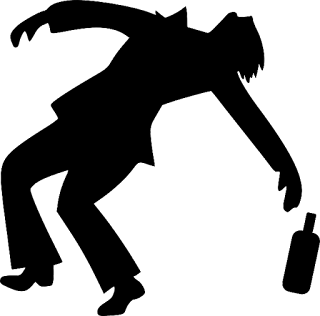Alcoholism is a disease..a physical illness. This disease is hereditary, and addiction to alcohol is not planned, forced, or accidental from careless drinking. It is biogenic because of susceptibility to sedative drug addiction.
Over time, cells within the body of the alcoholic become accustomed to the efficient at using ETOH as a preferred fuel source. Alcohol is pure calories and water soluble, but with ZERO nutrients....This is a big problem. The cells of the body actually become toxic and start to wall off nutrients as the permit alcohol to pass their membrane to nourish them with energy. Unfortunately, the alcoholic become sick.
These employees may have craving that is so severe that the tremulousness become violent shaking. Employees who enter DTs (delirium tremens) typically have been shaking violently before they enter this delusional state of mind.
As blood alcohol level drops, an increase in anxiety, nervousness, agitation, and augmented emotions become noticeable. These employees may fly off the handle easily, have anger management issues, or behave explosively.
Tremulousness in the fingers is not necessarily a symptom of alcohol intoxication or withdrawal of course, but let's discuss it. There are differences that distinguish alcohol withdrawal from other neurological conditions. The most important difference is usually age. Not too many 45 year old men have Parkinson's Disease. Also, employees with Parkinson's are typically not keeping it a secret.
Let's also discuss how you should respond as a supervisor and document what you see, despite the fact that shaking could be caused by anything from food poisoning from egg foo yung (happened to me) to Parkinson's Disease.
If you are a DOT Supervisor overseeing an alcoholic mechanic or are an office manager supervising a typist, tremulousness from withdrawal may interfere with fine motor skills and the ability to perform one's work. This is an embarrassing and upsetting condition. The alcoholic is aware that you notice, but denial is a useful defense mechanism at times like these.
Tremulousness is cured by raising the BAC with a drink. Until this point in time, you will the agitation get worse. Employees may leave the job site to consume alcohol and skip out work early.
When you document tremulousness, the language in your documentation should look something like this, "The employee appeared unable to keep her fingers from shaking on the keyboard. This interfered with productivity by making her typing slower and difficult.
Notice the quantifiable documentation above. Many DOT Reasonable Suspicion Training Courses do not discuss how to create documentation effectively although they may discuss drug and alcohol awareness education. Sorry, but education alone won't cut it.
If you see tremulousness, recognize it as a potential sign that the employees drunk. You can see a description of tolerance in part of our video that I posted on YouTube that will you will also see in the DOT Reasonable Suspicion Training Program
Non-DOT one-hour drug and alcohol training for supervisors can be seen in full here.














